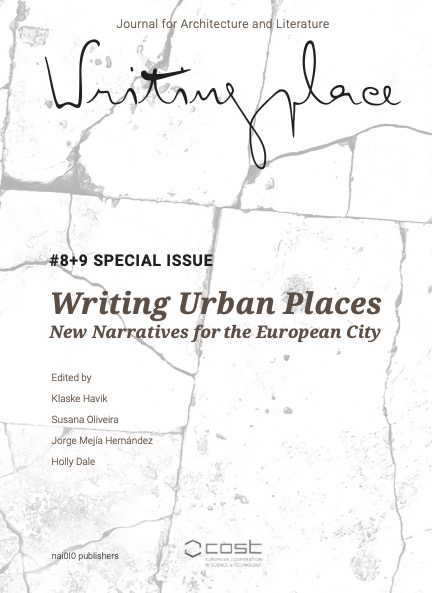Kamza and Tirana
A Travel Captured in Correspondence. The Planned, the Unplanned, and Everything in Between
DOI:
https://doi.org/10.7480/writingplace.8-9.7262Abstract
The text offers a glimpse into the conversation between two of the three organizers behind the training school titled ‘The Planned, the Unplanned, and Everything in Between’ held in Tirana and Kamza in March 2023. Three months before the training school, the two correspondents, Willie, visiting Albania for the first time through an STSM, and Dorina, temporarily located in the Netherlands, exchange daily thoughts aiming to interpret the two cities’ urban situations and sociopolitical conditions. Albania’s historical position at the edge of Europe has seen a remarkable shift in recent times, turning into an emerging discovery. Simultaneously, a burgeoning self-awareness of subverting narratives of representation has begun to take root among the Albanian youth – a phenomenon that adds depth and complexity to the ongoing dialogue. The transformation of the cities and the country is explained as multivocal while acknowledging protests, loss and destruction as part of a glorified urban project.
References
Bardhoshi, N., Shteti qe i druhemi (eng.The state we are afraid of), Inaugural lecture within the Laboratory of Urban Anthropology (Tirana: LAU, 2017).
Hooks, Bell. ‘Choosing the margin as a place of radical openness’. In Framework: The Journal of Cinema and Media, no. 36, 1989, pp. 15–23. JSTOR, http://www.jstor.org/stable/44111660.
Le Guin, Ursula K. Dancing at the edge of the world: Thoughts on words, women, places. (Open Road+ Grove/Atlantic, 2017).
Lleshanaku, Luljeta. Negative Space. (New Directions Publishing, 2018).
Malaj, Diana, The Story of Their Theater, Kamza, 2020. https://kosovotwopointzero.com/en/the-story-of-their-theater/, https://www.instagram.com/grupi_ata/.
Mehilli, Elidor. ‘Socialism with a Fascist Facade’, in From Stalin to Mao: Albania and the Socialist World, (Cornell University Press, 2017).
Novas Ferradás, Maria, and Pllumbi, Dorina. ‘Observing the Architectural Stigma of the Ugliness: The Cases of Albania and Galicia’. In D. van den Heuvel, F. Tanis, & S. A. Hwang (Eds.), The Observers Observed: Architectural Uses of Ethnography: Proceedings of the 8th Annual Conference of the Jaap Bakema Study Centre (Delft/Rotterdam: TU Delft and Het Nieuwe Instituut, 2021), 114-120.
Rosen,M and S. Musara, S. ‘Tirana Visible and Invisible’. In: Linder, B. (eds) "Invisible Cities" and the Urban Imagination. Literary Urban Studies. (London: Palgrave Macmillan, Cham. 2022).
Jeremy Till, Architecture Depends (Vol. 55). (MIT press, 2009).
Tsing, Anna Lowenhaupt.’ The Mushroom at the End of the World’. In The Mushroom at the End of the World. (Princeton: Princeton University Press, 2015).
Tsing, Anna Lowenhaupt et al. (ed.). Arts of living on a damaged planet: Ghosts and monsters of the Anthropocene. (University of Minnesota Press, 2017).
Vehbiu Ardian. Kulla e Sahatit, (Tirana: Çabej, 2018).
Downloads
Published
How to Cite
Issue
Section
License
Copyright (c) 2023 Dorina Pllumbi, Willie Vogel

This work is licensed under a Creative Commons Attribution 4.0 International License.



